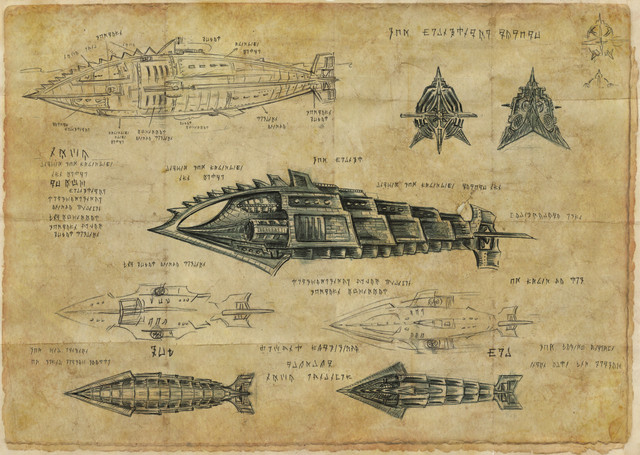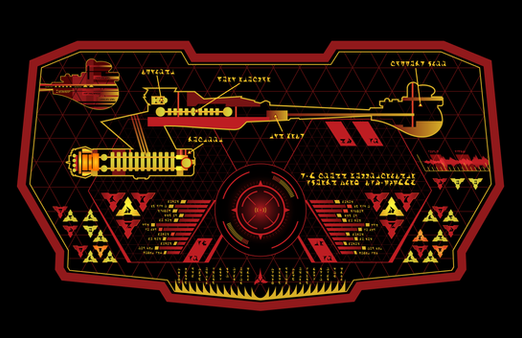HOME | DD
 labgnome — Dragon Planet Vertebrates (Version 1)
labgnome — Dragon Planet Vertebrates (Version 1)

#behemoth #dragon #drake #griffin #cladistics #phylogenic #seaserpent #phylogeny #speculativebiology
Published: 2017-09-06 00:22:27 +0000 UTC; Views: 1475; Favourites: 4; Downloads: 1
Redirect to original
Description
So here is an initial cladogram for the vertebrates I made in for my still unnamed planet of creatures that conveniently resemble animals from terrestrial mythology, folklore and some cryptozology.The colors denote how the organisms fall into apparent superficial groups resembling terrestrial organisms. At some point I might make new "groups" to better fit the relationships, but for now here's a general guide.
Giffinforms: these are beaked "birdlike" feathered creatures. This group is fully feathered over their entire bodies. The group includes "true" griffins, as well as other birdlike relatives that might not be immediately associated with them. Garudas and oozlum birds belong in this group. While most are highly adapted to flight like terrestrial birds, the flightless Keythongs (who are true griffins) and marine sea owls also belong to this group. Discussed in detail here .
Avimailiforms: these notably "mammal-like" have obviously avian feathery wings in most species. As opposed to hard beaks, this group has evolved well developed fleshy lips. Some species also have retractable claws and hooves as well. This group is mostly feathered, with many species having prominent fuzzy down. Several notable secondarily flightless lineages exist in this group. The largest of these are the unicorns and the reverse griffins. As such my unicorns are different, it that you could say they technically have "horse feathers". Discussed in detail here .
Avidraconiforms: these are the feathered "dragons" and "serpents". Across the group there is an evolutionary trend of limb reduction and loss culminating in the "winged snakes". Discussed in detail here .
Icthiocentauriformes: probably one of the largest non-flying groups of animals. The defining feature of this group is their articulate grasping forelimbs. This group includes centaurs, merlings (mermaids), water horses and the illhevi. For obvious reasons it also includes icthiocentaurs, as a group between centaurs and merlings, who are themselves not highly "developed" but representative of more primitive marine mammals that retain functional grasping forelimbs. The water horses and illhevi represent a loss of this functionality. Discussed in detail here
Hexitherians: a sibling clade to icthiocentauriforms. Possibly marsupial. I don't have much on them right now. Basically they are the "other mammals" group. Discussed in detail here .
Longaefoms: these are the asian dragons and their immediate relatives. Though they have a hair (or proto-feather) like covering, they are egg laying. They could be thought of as monotremes or synapsids. There are many flying forms with bat-like membranous wings, making the manticores and "imps" a sibling group to asiatic dragons and quinlin. The quinilin are flightless relatives of the Long, but not directly evolved form them. The "asian dragons" are distinguished by the presence of bioelectic organs, that work similar to an electric eel, hence their sepentine shape. Discussed in detail here .
Drakeniforms: these are the "drakes" and their relatives. Ancestrally this group is descended from a burrowing dragon-like ancestor. Those that initially lost their flight became proper quadrupedal "drakes" and came to fill a variety of terrestrial roles. The other main branch of this group instead atrophied their hindmost limbs evolving into jaculi, or "backwards wyrvens". Jaculi that became flighless evoleved into lindorms, some of whom lost their forelegs and became wurms. Discussed in detail here .
Wyrveniforms: these are the "wyrvens" and their relatives. Ancestrally this group is descended form Zmeys or bipedal dragon-like species. Asside form primitive and fossil forms this group is largely defined by the loss of limb pairs. With "running drakes" based on some "dinosaur cryptids" (especially Australian) descended from initial flightless forms and Wyrvens being descended from forms that lost their forelimbs. Wyrvens themselves diversified into the "true" wyrvens who evolved "sings", or claws on the ends of their tails, and tatzelwurms who became secondarily flightless.
Eudraconiforms: but what about dragons? Dragons. Dragons! DRAGONS!!! I mean what else can I say? They're dragons. Proper dragons, with four legs and wings and everything. Not all of them breath fire, with this group including poison and corrosive breathing forms as well. However these dragon's fire breath is part of the same family of chemical weapons ancestral to their group as well as drakes and wyrvens. Dragons took this system and modified it to the extreme, ultimately evolving a combustible spray. Conversely dragon digestion has become increasingly simple as the ability to cook their food means that they have lost many of the typical adaptations to a carnivorous diet.
Behemoforms: basically big scaly herbivores. I mean really big. Really really big. Really really bigly huge. Basically scaly land-whales.
Hexilacertia: six-legged lizards. Some of these get pretty big.
Octireptillia: because someone had to make basilisks have 8 legs, and make less sense. They are very primitive compared to other "reptiles". Maybe this planet's tuataras?
Polyamphiba: apparently lake monsters with an inappropriate number of legs are a thing, also that dragon-eating salamander from D&D.
Galleopterygii: these things had to evolve from something. Most "many finned" sea serpents go here. Also called galleon fish.
Chrondriophidea: snarks? This planet should have shark-things right?
Polyicthies: more so the many-finned and segmented serpents belong here. They don't have jaws. A segmented body-plan is ancestral to this planet's vertebrates. Basically they are part of the same larger grouping of phyla that will include arthropod and anelid-like species.
Most of these I just have listed as clades of indeterminate rank. I'm still working on the taxanomic ranking. But here's a general outline.
Related content
Comments: 8

So are you ready for the Easter-bunny hive-mind?
👍: 0 ⏩: 1

Yeah so egg-laying convergent rabbit-birds that are highly derived (hornless) unicorns (technically al-mi'raj). Also some species are eusocial.
👍: 0 ⏩: 0

Yeah, I'm still here. I really missed this site. For a while I had a really shitty computer situation, then I was on that site for a while and now I'm back here.
👍: 0 ⏩: 1

Eh, it was more of a lucky guess.
👍: 0 ⏩: 0
























